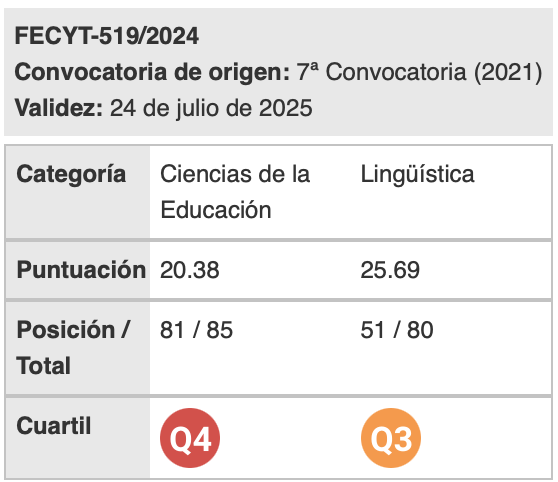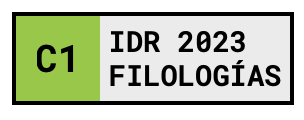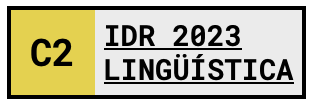Subtitling in advertising for the deaf and hard of hearing: issues, challenges and future prospects
Keywords:
translation, advertising, FrenchAbstract
Subtitling for deaf people has undergone a strong evolution in the last years thanks to the legislation and to the lobbies which conduct campaigns in favour of its development. However, as far as TV advertising, both in France and in Spain, are concerned, there is a lack of compulsory legislation on subtitles, which is the reason why some campaigns are inaccessible to the deaf community. This work aims to show the fundamental need for the translator of subtitles for deaf and hard of hearing people to reproduce the communication strategy of the brand and to adapt advertising messages in a creative and inclusive way. The commercial for the product Kinder Bueno by the Ferrero group constitutes a representative example of it. The challenge for the professional subtitler is to find a strategic compromise between the language of the brand and the targeted deaf community on which depends the success or failure of the advertising campaign.
Downloads
References
Arnaiz Urquiza, V. (2012). Los parámetros que identifican el subtitulado para sordos. Análisis y clasificación. MonTI, 4, 103-132.
Asociación Española de Normalización y Certificación (AENOR) (2012). Norma UNE 153010 Subtitulado para personas sordas y personas con discapacidad auditiva. Madrid: AENOR.
British Broadcasting Corporation (BBC) (2009). Online Subtitling Editorial Guidelines. <http://www.bbc.co.uk/guidelines/futuremedia/accessibility/subtitling_guides/online_sub _editorial_guidelines_vs1_1.pdf> [15/08/2015].
Conseil Supérieur de l’Audiovisuel (CSA) (2011). Charte relative à la qualité du sous-titrage à destination des personnes sourdes ou malentendantes. <http://www.csa.fr/en/Espace- juridique/Chartes/Charte-relative-a-la-qualite-du-sous-titrage-a-destination-des- personnes-sourdes-ou-malentendantes-Decembre-2011> [20/08/2015].
Cambra, C., Silvestre, N. & Leal, A. (2009). Análisis de la comprensión por parte del alumnado sordo de los documentos televisivos subtitulados y criterios de mejora. Quaderns del CAC, 31-32, 155-159.
Civera, C. & Orero, P. (2010). Introducing icons in subtitles for the deaf and hard of hearing: Optimising reception. In A. Matamala & P. Orero (Eds.), Listening to subtitles. Subtitles for the deaf and hard of hearing (pp. 149-162). Bern, Berlin, Bruxelles, Frankfurt am Main, New York, Oxford, Wien: Peter Lang.
Cruz García, L. (2004). Características diferenciales de la traducción publicitaria. El papel del traductor de anuncios. In L. Lorenzo & A. Pereira (Eds.), Traducción subordinada III: Traducción y publicidad (pp.17-28). Vigo: Servicio de Publicaciones de la Universidad de Vigo.
Dávila Montes, J. (2008). La traducción de Lewiston/Queenston/Lampeter: The Edwin Mellen Press.
la persuasión publicitaria.
De Linde, Z. (1996). Le sous titrage intralinguistique pour les sourds et les malentendants. In Y. Gambier (Ed.), Les transferts linguistiques dans les médias audiovisuals (pp. 165-83). Paris: Presses Universitaires du Septentrion.
De Linde, Z. & Kay, N. (1999). The semiotics of subtitling. Manchester: St. Jerome.
Díaz Cintas, J. (2008). Pour une classification des sous-titres à l’époque du numérique. In J.M.
Lavaur & A. Serban (Eds.), La traduction audiovisuelle. Approche interdisciplinaire du sous-titrage (pp. 27-41). Bruxelles: De Boeck.
Díaz Cintas, J., Matamala Ripoll, A. & Neves, J. (2010) (Eds.) New insights into audiovisual
translation and media accessibility. Amsterdam: Rodopi.
Gottlieb, H. (1994). Translating people, not words. Subtitling – visual interpretation. In C. Dollerup & A. Lindegaard (Eds.), Teaching Translation and Interpreting. Insights, aims, visions (pp. 261-274). Amsterdam: John Benjamins.
Guidère, M. (2000). Publicité et traduction. Paris: L’Harmattan.
Herrera, V., Puente, A., Alvarado, J. M. & Ardilla, A. (2007). Códigos de lectura en sordos: la dactilología y otras estrategias visuales y kinestésicas. Revista latinoamericana de Psicología, 39(2), 269-286.
Neves, J. (2008). Le sous-titrage pour sourds et malentendants: à la recherche d’une qualité possible. In J.M. Lavaur & A. Serban (Eds.), La traduction audiovisuelle. Approche interdisciplinaire du sous-titrage (pp. 43-54). Bruxelles: De Boeck.
Pereira, A. (2010). Criteria for elaborating subtitles for deaf and hard of hearing adults in Spain: Description of a case study. In A. Matamala & P. Orero (Eds.), Listening to subtitles. Subtitling for the Deaf and Hard of Hearing (pp. 87-102). Frankfurt, Berlin, Bern, Bruxelles, New York, Oxford, Wien: Peter Lang.
Pereira, A. & Lorenzo, L. (2005). Evaluamos la norma UNE 153010: subtitulado para personas sordas y personas con discapacidad auditiva. Subtitulado a través del teletexto. Puentes, 6, 21-26.
Pettit, Z. (2008). Le sous-titrage: le rôle de l’image dans la traduction d’un texte multimodal. In J.M. Lavaur & A. Serban (Eds.), La traduction audiovisuelle. Approche interdisciplinaire du sous-titrage (pp. 101-11). Bruxelles: De Boeck.
Romero Fresco, P. (2015) (Ed.) The Reception of Subtitles for the Deaf and Hard of Hearing in Europe, UK, Spain, Italy, Poland, Denmark, France and Germany. Frankfurt, Berlin, Bern, Bruxelles, New York, Oxford, Wien: Peter Lang.
Tamayo, A. (2015). Estudio descriptivo y experimental de la subtitulación en TV para niños sordos. Una propuesta alternativa. Tesis doctoral (inédita). Castellón de la Plana: Universitat Jaume I.
Valdés Rodríguez, C. (2004). La traducción publicitaria, comunicación y cultura. Valencia: Universidad de Valencia.
Valdés Rodriguez, C. & Fuentes Luque, A. (2008). Coherence in translated television commercials. European Journal of English Studies, 12, 133-148.
Yuste Frías, J. (2010). Au seuil de la traduction: la pararaduction. In T. Naaijkens (Ed.), Event or Incident. Événement ou Incident. On the Role of Translation in the Dynamics of Cultural Exchange. Du rôle des traductions dans les processus d’échanges culturels, 3 (pp. 287-316). Bern, Berlin, Bruxelles, Frankfurt am Main, New York, Oxford, Wien: Peter Lang, col. Genèses de Textes–Textgenesen (F. Lartillot [dir.]).
Yuste Frías, J. (2011a). Traducir para la pantalla: el traductor entre el texto y la imagen. En E. Di Giovanni (Ed.), Diálogos intertextuales 5: Between Text and Receiver: Translation and Accessibility. Entre texto y receptor: traducción y accesibilidad (pp. 57-88). Frankfurt, Berlin, Bern, Bruxelles, New York, Oxford, Wien: Peter Lang.
Yuste Frias, J. (2011b). Leer e interpretar la imagen para traducir. Trabalhos em Lingüística Aplicada (TLA), 50(2), 257-80. <http://www.scielo.br/pdf/tla/v50n2/03.pdf> [28/08/2015].
Yuste Frías, J. (2013). Nuevas perspectivas para traducir la imagen en publicidad internacional. In X. Montero Dómínguez (Ed.), Traducción para la comunicación internacional (pp. 83-92). Granada: Comares.
Yuste Frías, J. (2015). Paratraducción: la traducción de los márgenes, al margen de la traducción. Delta, 31, 317-347.
Downloads
Published
How to Cite
Issue
Section
License
Authors who publish with this journal agree to the following terms:
- Authors retain copyright and grant the journal right of first publication with the work simultaneously licensed under a Creative Commons Attribution License that allows others to share the work with an acknowledgement of the work's authorship and initial publication in this journal.
- Authors are able to enter into separate, additional contractual arrangements for the non-exclusive distribution of the journal's published version of the work (e.g., post it to an institutional repository or publish it in a book), with an acknowledgement of its initial publication in this journal.
- Authors are permitted and encouraged to post their work online (e.g., in institutional repositories or on their website) prior to and during the submission process, as it can lead to productive exchanges, as well as earlier and greater citation of published work (See The Effect of Open Access).

Revista de Lenguas para fines específicos is licensed under a Creative Commons Reconocimiento-NoComercial-SinObraDerivada 4.0 Internacional License.
























